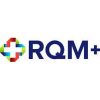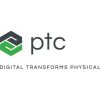Ohayou Gozaimasu. Dr. D hopes that my readers in the United States had a safe and enjoyable Independence Day (not the alien invasion type).
The doctor would like to kick of this week’s guidance by introducing a new term “Seihin Hyojun Sho.” The Seihin Hyojun Sho is a Device Master File. For those of you already familiar with the European-style technical file (TF), the compilation of the Seihin Hyojun Sho is very similar. In short, this document contains the same technical data associated with a TF, minus the European Authorized Representative, which is replaced by the Market Authorization Holder (MAH).
In preparing your organization for eventual compliance with the MO 169, the doctor believes that “convoking” (look-it-up) a meeting with key stakeholders would be the prudent path to pursue. Remember; “Everyone in the organization is responsible for achieving and sustaining compliance to standards or regulations and not just regulatory or quality.” For you regulatory and quality folks that read the frequent rants of Dr. D, please feel free to share my last comment with your bosses. In fact, if they disagree with the doctor’s concept of shared responsibility, please have them call me. That being said, it’s on with the show; and Dr. D hopes you enjoy this week’s guidance.
Ministerial Ordinance Number 169 (2004)
Chapter Two “Manufacturing Control and Quality Control in Manufacturing Sites of Medical Device Manufacturers, etc.”
Section Two – Quality Management System
(General Requirements for Quality Management System)
Article 5 The manufacturer, etc. shall establish, document, implement and maintain a quality management system and maintain its effectiveness in accordance with the provision of this Chapter.
2. The manufacturer, etc. shall conduct the following duties.
(1) To identify the processes needed for the quality management system (including
the results to be achieved by the processes) (hereinafter simply referred to as “processes” in this Chapter) and their application throughout the manufacturing site,
(2) To determine the sequence and interaction of the processes,
(3) To determine the criteria and methods needed to ensure that both the operation and control of the processes are effective,
(4) To ensure the availability of the resources and information necessary to support the operation and monitoring of the processes,
(5) To monitor, measure and analyse these processes, and
(6) To implement the actions necessary to achieve the planned results specified in preceding Item (1) and maintain the effectiveness of these processes.
3. The manufacturer, etc. shall manage the processes in accordance with the provision of this Chapter.
4. Where the manufacturer, etc. choose to outsource any process (excluding those which are subject to the authorisation specified in Paragraph 1 of Article 13 of Law or the
recognition specified in Paragraph 1 of Article 13-3 of Law) that affects the conformity with the product requirements (including the laws, orders and ordinances which are relevant to the pharmaceutical affairs or the orders or official actions based on the laws, orders and ordinances (hereinafter simply referred to as “regulatory requirements” in this Chapter)) (hereinafter referred to as “product requirements” in this Chapter), the manufacturer, etc. shall ensure the control over such processes.
5. The manufacturer, etc. shall ensure that the control of such outsourced processes is identified within the quality management system.
(Documentation of Quality Management System)
Article 6 The manufacturer, etc. shall ensure that the quality management system documentation includes the following documents and that the documented requirement, procedure, activity or special arrangement is implemented and maintained.
(1) The documented statements of the quality policy and quality objectives,
(2) The quality manual,
(3) The documents needed by the manufacturer, etc. to ensure the effective planning, operation and control of their processes in the manufacturing site,
(4) The documented procedure and records specified in this Chapter, and
(5) Any other documentation specified by the laws, orders and ordinances related to the pharmaceutical affairs.
2. For each type or model of the medical devices, the manufacturer, etc. shall establish and maintain the document defining the product specifications and quality management system requirements (hereinafter referred to as “Seihin Hyojun Sho” in this Chapter), or a file identifying Seihin Hyojun Sho.
3. The manufacturer, etc. shall ensure that Seihin Hyojun Sho defines the complete manufacturing process concerned with the products of the manufacturing site and, if applicable, the installation specified in Paragraph 1 of Article 42 and the servicing specified in Paragraph 1 of Article 43.
(Quality Manual)
Article 7 The manufacturer, etc. shall establish and maintain the quality manual that includes the following items.
(1) The scope of the quality management system, including the details of and justification for any exclusion and/or non-application,
(2) The documented procedure established for the quality management system, or reference to them, and
(3) The description of the interaction between the processes of the quality management system.
2. The manufacturer, etc. shall ensure that the quality manual outlines the structure of the documentation used in the quality management system.
(Control of Documents)
Article 8 The manufacturer, etc. shall ensure that the documents (excluding the records), including those specified in preceding two Articles and other Articles in this Chapter, required by the quality management system (hereinafter referred to as “QMS documents”) are controlled.
2. The manufacturer, etc. shall ensure that the documented procedure is established to define the controls needed for the following duties.
(1) To review and approve the QMS documents for adequacy prior to the issue,
(2) To review and update as necessary and re-approve the QMS documents,
(3) To ensure that the changes and current revision status of the QMS documents are identified,
(4) To ensure that the relevant versions of the applicable QMS documents are available at the points of the use,
(5) To ensure that the QMS documents remain legible and readily identifiable,
(6) To ensure that the QMS documents of external origin are identified and their distribution is controlled, and
(7) To prevent the unintended use of the obsolete QMS documents, and to apply suitable identification to them if they are retained for any purpose.
3. The manufacturer, etc. shall ensure that the changes to the QMS documents are reviewed and approved either by the original approving department or another designated department which has access to pertinent background information upon which to base its decisions.
4. The manufacturer, etc. shall retain at least one copy of the obsolete QMS documents for the following period (5 years for the QMS documents concerned with the training) from the date of obsolescence, with the proviso that this provision shall not apply to the documents used for the manufacturing or testing of the products in case where they are maintained to be available for the retention period of the records of the products specified in next Article.
(1) 15 years for the products concerned with the specially designated maintenance-control-required medical devices specified in Paragraph 8 of Article 2 of Law (1 year plus the shelf life or the period until the expiry date (hereinafter simply referred to as “shelf life”), for the products concerned with the medical devices of which shelf life shall be displayed and of which shelf life plus 1 year exceeds 15 years), or
(2) 5 years for the products concerned with the medical devices other than the specially designated maintenance-control-required medical devices (1 year plus the shelf life, for the products of which shelf life shall be displayed and of which shelf life plus 1 year exceeds 5 years).
(Control of Records)
Article 9 The manufacturer, etc. shall ensure that the records are established and maintained to provide the evidence of the conformity to the requirements, including those for the records, specified in this Chapter and of the effective operation of the quality management system and that the records remain legible, readily identifiable and retrievable.
2. The manufacturer, etc. shall ensure that the documented procedure is established to define the controls needed for the identification, storage, protection, retrieval, retention time and disposition of the records specified in preceding Paragraph 1.
3. The manufacturer, etc. shall retain the records specified in preceding Paragraph 1 for the following period (5 years for the records concerned with the training) from the date of the establishment.
(1) 15 years for the products concerned with the specially designated maintenance-control-required medical devices (1 year plus the shelf life, for the products concerned with the medical devices of which shelf life shall be displayed and of which shelf life plus 1 year exceeds 15 years), or
(2) 5 years for the products concerned with the medical devices other than the specially designated maintenance-control-required medical devices (1 year plus the shelf life, for the products concerned with the medical devices of which shelf life shall be displayed and of which shelf life plus 1 year exceeds 5 years).
What device manufacturers need to know
For those of you already working with ISO 13485:2003, the material in Chapter 2/Section 2 should look vaguely familiar. Why? Because the requirements delineated within Article 5 through Article 9, mirror ISO 13485. For starters, device manufacturers wishing to introduce product into the Japanese market “shall establish, document, implement, and maintain” a quality management system (QMS). If a device manufacturer decides to outsource processes, the manufacturer must exude some level of control over these processes, which includes the supplier performing these processes. Surprise folks, this should not be earth-shattering news. An effective QMS is needed to support the manufacture of medical devices. Who knew?
Additionally, the QMS shall be adequately documented. For example, device manufacturers, similar to Clause 4 of ISO 13485:2003, are required to have:
- An established quality policy;
- Written quality objectives;
- A written quality manual;
- Written procedures;
- Written work instructions;
- Written records to support evidence of compliance; and
- A written record retention policy.
Under the requirements delineated within Article 6, the device manufacturer must also create and maintain the Seihin Hyojun Sho, the Japanese equivalent of a European Technical file.
Furthermore (again similar to ISO 13485), the quality manual must contain the following elements:
- The written scope of the QMS;
- Justification for a requirement deemed to be an exclusion (e.g., design and development control);
- Justification for requirements deemed not applicable;
- A compiled list of procedures supporting the QMS or a pointer to the master list of procedures;
- A description of the relationship between processes employed to support the QMS (e.g., could be a pictorial or flow chart); and
- The QMS document structure (i.e., Level 1 – QA Manual; Level 2 – QMS Procedures; Level 3 – Work Instructions; and Level 4 – Records).
Moreover, all documents (minus the records – reference Article 9) must be controlled. Similar to clause 4.2.3 of ISO 13485:2003, device manufacturers must actually control their documents. Once again, who knew? As a minimum, device manufacturers are required to:
- Review and approved QMS documents;
- Revise documents, when deemed applicable;
- Track and record current document revisions;
- Ensure documents are available at point-of-use (e.g., manufacturing floor);
- Ensure documents are actually legible, e.g., good documentation practices (GDP);
- Control external documents; and
- Identify and remove obsolete documents from use (note: obsolete QMS documents must be retained for 5-years from date of obsolescence).
Note: There are additional retention requirements for obsolete documents listed under Article 8. The requirement is 15-years for products identified as maintenance-control-required medical devices; or shelf-life plus one year if the time frame exceeds 15-years. All other record retention requirements should be in accordance with Article 9.
Finally, Article 9 delineates the requirements associated with the control of records. Again, this requirement is similar to clause 4.2.4 of ISO 13485:2003. The establishment of a written procedure, just like ISO, is a salient requirement. There are three scenarios listed in MO 169: (a) 5-years; (b) 15-years; and (c) shelf-life plus 1-year. The requirements for retention are device dependent. Similar to the FDA, if an event, process, policy, procedure, record, etc. is not documented in writing, in the eyes of PMDA, it never happened or does not exist. Go figure. Device manufacturers wishing to enter the Japanese market must create, manage, and retain records. Who knew?
What device manufacturers need to do
Dr. D is going to continue with the onslaught of broken-record talk with another mention of employing a cross-reference matrix (reference Table 1.0) to map procedures to regulations. You are probably asking yourselves, why would the good doctor continue to punish us with this repetitive approach? Dr. D is going to tell you. Clearly, it is not practical to write multiple procedures to address similar requirements. The employment of a matrix; and a reference made to the specific regulation under reference documentation within each procedure, is an acceptable approach, providing the procedure meets all of the regulatory requirements.
| Procedure |
Name |
21 CFR, Part 820
|
EN ISO 13485:2003
|
MHLW MO 169 |
| 1238-1 Rev A |
Quality Management System |
820.5 |
4 |
Article 5 |
| 1239-1 Rev D |
QMS Documentation |
820.20 |
4.2 |
Article 6 |
| 1240-1 Rev A |
Quality Manual |
820.20 |
4.2.2 |
Article 7 |
1241-1 Rev C
|
Control of Documents |
820.40 |
4.2.3 |
Article 8 |
|
1242-1 Rev G
|
Control of Records |
820.180 |
4.2.4 |
Article 9 |
Regardless of if an organization chooses to employ a matrix approach or one of their own approaches for mapping, ensuring all of the requirements delineated within MO 169 are adequately addressed must be a fundamental goal. If an organization already has a fully-approved QMS, compliant with ISO 13485:2003, then the foundation is already in place in regards to MO 169.
Takeaways
Hopefully by now, the readers have determined that Dr. D is a big proponent of creating a requirements matrix to map regulations to procedures. Since many of the QMS requirements associated with MO 169 mirror ISO 13485, pursuing a matrix approach is just plain-old common sense, at least from the doctor’s perspective. That being said, Dr. D will leave the readers with two takeaways for this week. If you have not commenced with building a requirements matrix for your organization, stop the procrastination and start building the matrix, today. The second takeaway relates to specific MO 169 requirements, e.g., record retention periods. Ensure specific regulatory requirements find their way into your procedures.
Until the next edition of DG, when the doctor provides guidance on MO 169 – Chapter 2, Section 3 “Management Responsibility” (Articles 10 through 20), sayonara from Dr. D and best wishes for continued professional success.






